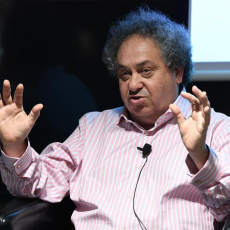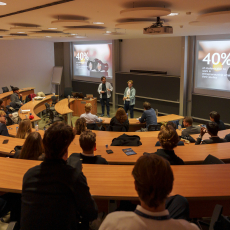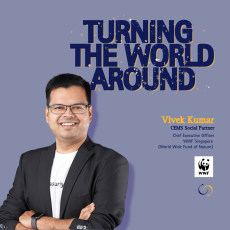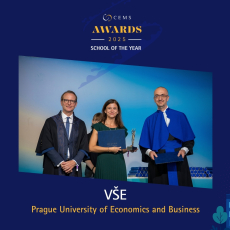DEBATE CONTINUES to rage about the effect technology will have on humanity. Pessimists and optimists are making different predictions about how much, and how quickly, existing jobs will be modified or disappear altogether. They disagree about how many new jobs will be created and whether this number will compensate for the inevitable loss of jobs to automation.
Both sides, however, agree on one thing: Many, if not all, of the jobs that exist today will be transformed or replaced by the rapid deployment of robots and artificial intelligence.
This broad debate raises profound questions for educators. How do we prepare students for a world of work where robots and AI are the norm? How do we work with employers to keep up with the exponentially increasing pace of technological change?
Employers have made it plain that many of our current educational approaches are outdated. They have let us know that, if we do not embrace and anticipate change in our curricula, technological advancements in robotic technologies and AI will thrust change upon us.
OUR NEW ROLE AS EDUCATORS
To meet the needs of our students and the employers who hire them, we must first view our role as educators differently. We must be more creative as we revise our approaches to delivering knowledge, inspiration, and insights. This new perspective means that we must:
Shift away from the centuries-old notion of the “sage on the stage.”
Instead, we must embrace our role as “coaches on the side.” We can no longer act as mere lecturers, but instead become facilitators who can curate class exercises in which students can learn from each other and work collaboratively on messy or wicked problems.
Rethink how we can use new technologies more effectively.
For many faculty, that will mean using AI to facilitate greater student connectedness, both inside and outside the classroom. New technological tools can help us provide more personalized experiences that meet each student’s diverse needs and abilities.
Embrace the rise of online learning.
Students’ interest in pursuing online microcredentials—also called nanocredentials—is rapidly escalating. The popularity of these programs indicates that more students want to decide for themselves when, where, and from whom they wish to consume educational experiences.
Question traditional modes of course delivery.
The fact that more students are choosing short-format courses also forces us to question how we deliver education. For instance, how important is it that students learn in a shared physical space? As the pandemic has pushed us to move our courses online, we have learned what it takes to deliver remote education successfully. Should we use that knowledge to offer more intensive online modes of delivery and shorten the time it takes to complete traditional degrees, even after the danger of the coronavirus has passed?
Rethink our core courses.
Understandably, there have been strong calls for schools and universities to place a heavy emphasis on STEM subjects. But are those the only courses our students need to study to be able to seize opportunities that will arise from the Fourth Industrial Revolution?
Even during a time of great technological change, I would argue we should not abandon the study of the liberal arts in our core courses. Instead of focusing solely on STEM disciplines, I agree with those who advocate that it is more appropriate for educators to emphasize STEAM—science, technology, engineering, (the liberal) arts, and mathematics.
HUMAN SKILLS IN THE AGE OF AI
I am not alone in seeing the importance of the liberal arts in the robotic age. In his 2016 book Technology vs. Humanity: The Coming Clash Between Man and Machines, futurist Gerd Leonhard takes this point much further. Leonhard argues that as machines increasingly outperform our left-brain logical, mathematical, and computational capacities, we need to become less like machines and expand our right-brain (or as Leonhard prefers to call it, “plastic-brain”) capabilities. He believes that what defines humanity are four attributes that he sums up in the acronym CORE: creativity/compassion, originality, reciprocity/responsibility, and empathy.
Joseph Aoun of Northeastern University makes a similar case in his 2017 book Robot-Proof: Higher Education in the Age of Artificial Intelligence. In the robot age, he writes, students must hone not only their data literacy and technological literacy, but also their human literacy, which refers to the ability to communicate effectively, build relationships, brainstorm, and work in diverse teams.
Much like Leonhard, Aoun argues that students should develop four higher-order skills: critical thinking, systems/holistic thinking (the ability to break free from domain-specific thinking), entrepreneurship (the ability to see and seek opportunities), and cultural agility (the ability to feel empathy, exercise discretion, and sustain strong relationships).
Furthermore, Aoun writes, educators need to break away from a traditional focus on convergent thinking, in which they teach students to use established rules and apply technical skills to determine the single correct answer for a well-defined problem. These are tasks at which smart machines excel. Instead, educators should emphasize divergent thinking—such as what happens during brainstorming sessions when people offer multiple suggestions and use their creativity, imagination, and playfulness to redefine problems and think of innovative solutions.
To prepare students for the robot age, we must teach them more than how to write computer code. We need to train them to critically appraise a wide range of complex issues. In our classrooms, students should discuss privacy in a digital world, as well as the biases of algorithms and the humans who write them. They should question the power and responsibilities of organizations that collect, own, and sell the personal data of people who use their products and services.
They also should examine the generation, dissemination, and public acceptance of “fake news” and “alternative facts”; the rise of trolls, cyberbullying, and “callout culture”; and the importance of cybersecurity and data integrity. Each of these topics should feature in a broad-based curriculum on digital literacy.
HONING ‘HUMAN’ SKILL SETS
Many schools have already made great strides in incorporating digital literacy into their curricula. In particular, I have been impressed by the efforts of schools that belong to CEMS, the Global Alliance in Management Education. Many of the 33 CEMS schools have reformed their curricula with AI in mind, often in collaboration with the corporations and NGOs that are also part of the alliance.
For example, since 2016, students enrolled in the CEMS Master’s in International Management (MiM) at the University of Cologne in Germany have worked on multiple complex consulting projects for ABB, a multinational corporation in Switzerland. In one such project, ABB asked students to recommend ways to use AI to analyze sources of publicly available information, such as websites. Its leaders wanted to use that analysis to predict growth potential in key markets.
Such a course bolsters students’ capacity for critical thinking and collaboration. For instance, Yiran Yang, a student who worked on the ABB project, noted that previously she “had a strong dependency on certainty and only had experience in a traditional project management approach.” Working with ABB, she said, helped her develop “a new mindset and techniques in areas such as design thinking and agile project management.”
Member institutions have made similar strides through a collaboration with Fligby, a movie-based leadership development simulation game. Corvinus Business School in Budapest, Hungary, has implemented the game at that school to allow students to test their leadership skills in a safe, zero-risk environment. Using such simulations is another way that professors can combine technology and the human component to deliver an education experience that readies students for the future.
At my school, the University of Sydney Business School in Australia, we offer a course called Digital Transformation, in which student teams develop ideas for new technology-based businesses and create plans for implementing their ideas successfully and ethically. Industry experts from sectors such as banking, technology startups, and venture capitalism provide each team with constructive feedback.
Students in our digital transformation course focus not only on the mechanics of AI, but also on new managerial techniques and tools. Last year, for example, one group developed a concept for a “cashier-less” grocery store—especially applicable during the global pandemic. Another presented an idea for using AI and the Internet of Things to create an inventory management system at grocery retailers.
Corporate partnerships are critical to creating such educational experiences. That’s why corporate partners are a mainstay of CEMS MiM programs. They co-design the curriculum with faculty, set and host mandatory business projects, and offer students the hands-on internships that are a central feature of the program. With their input, our students can explore the emerging challenges related the rise of robots and AI in the workplace.
DESIGNING AI-INSPIRED EDUCATION
Finally, if business schools are to offer students a well-rounded educational experience, we must make continuous education the new norm. In other words, we must help people learn new skills—and unlearn old skills—as needed, throughout their lives and across multiple careers.
We have a responsibility to help learners—wherever, whenever, and however they enroll—to question accepted norms and challenge assumptions that they previously took for granted. We must encourage them to discover whether there is a better way of doing things. And we must teach them to explore issues of trust, purpose, values, and ethics as they explore the possibilities technology has to offer.
These are skills that cannot be coded into algorithms. They are the skills that will uniquely position business leaders to succeed in the future of work.
Greg Whitwell is chair of CEMS, the Global Alliance in Management Education, and dean of University of Sydney Business School in Australia.
This article first appeared in BizEd: https://bized.aacsb.edu/articles/2020/december/its-time-to-embrace-the-ai-integrated-curriculum




